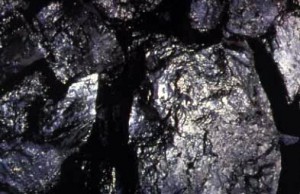Transmission for coal – FERC AD05-3
March 21st, 2009
Yes, all this transmission we see, the hard to believe plans of superhighways across the country, MTEP, JCSP, Green Power Express, TrAIL line, Mid-Atlantic Power Pathway, Susquehanna-Roseland, on and on and on, it’s for coal, we know that, but when the truth jumps up and is as in-your-face as it is at this meeting… well, ya gotta read it to believe it. From the FERC docket entitled PROMOTING REGIONAL TRANSMISSION PLANNING AND EXPANSION TO FACILITATE FUEL DIVERSITY INCLUDING EXPANDED USES OF COAL-FIRED RESOURCES (really, that’s the name…):
Here, from p. 61, is a tantalizing snippet from the Pres. of PJM:
PJM is certainly proud of what has been accomplished to date to open up markets to coal, but there is much more that we and others in this region can do to further enhance that use of coal.
It is for this reason that, today, PJM is setting out by example, a new initiative which we have labeled Project Mountaineer — appropriately titled for the state that we’re in — to utilize our regional transmission expansion planning process to explore ways to further develop an efficient transmission super highway, if you will, to deliver the low-cost coal resources in this region of the country, to market.
And to actually build it when people don’t want it over their land, don’t want to look at it, don’t want the EMF impacts? Well, they say…
About the only answer to that would be some sort of federal siting law that would basically overcome local property rights.
National Interest Electric Transmission Corridors anyone? This was in 2005… as the CapX Technical Report was about to be published, putting all of this into action… sigh….
To look up the entire docket, go HERE and search for AD05-3, and voila, there it is for your edification and reading enjoyment!
It’s all for coal, we know that, and we’ve got to NOT let them get away with this!
Putting the screws to coal
February 4th, 2009
Here’s the Executive Order — let’s have one in every state:
EXECUTIVE DIRECTIVE No. 2009 – 2
3. Generating or purchasing electricity from existing electricity generating resources.
This Directive is effective immediately.
Given under my hand this 3rd day of February in the year of our Lord, two thousand and nine.
SD’s Sen. Thune sucks up to Big Stone II
February 3rd, 2009
Horses Ass Award for South Dakota’s Senator John Thune.
Has he no shame? Sen. John Thune fired off this letter to the EPA when it filed objections to the Big Stone II air permit. Whatever is he thinking? That the regulations don’t apply to his pet project, despite the obvious emissions problems?
Here’s the letter:
It has recently come to my attention that the Environmental Protection Agency (EPA) has issued some objections regarding the South Dakota Department of Environment and Natural Resources (DENR) desire to renew the operating permit for the existing Big Stone Power Plant in South Dakota. As a strong proponent of expanding our commitment to addressing our nation’s energy challenges, I am writing to inquire about your Agency’s recent action, as well as how this objection impacts the Big Stone II project.
As you know, the United States is the world’s largest electricity consumer and is expected to remain that way for decades to come. In the Upper Midwest, experts predict several thousand megawatts of generation capacity are needed to meet our region’s growing energy demands. In responding to this challenge, five electric utilities have proposed building a 500-580-megawatt, coal-fired electric generation plant. The new facility would be built next to the existing 450-megawatt Big Stone Power Plant, located near Big Stone City, South Dakota. Four of these partners (Otter Tail Power Company, Heartland Consumers Power District, Montana-Dakota Utilities Company and Missouri River Energy Services) provide electricity to thousands of my constituents throughout South Dakota, and more than one million people when you total their services to individuals and businesses in four other states.
While the addition of Big Stone II will more than double the plant’s generation capacity, it will also utilize new technologies so that emissions of sulfur dioxide, nitrogen oxides and mercury from the two plants will be cleaner than the current, single plant. Big Stone II is also expected to emit 20 percent less carbon dioxide than existing coal-fired power plants in the region. Since President Obama indicated his readiness to “invest in low emissions coal plants” within his New Energy for America plan, I trust the Administration will support the efforts of these dedicated individuals who have committed their work, time and money on this project to ensure the region will have safe, reliable and affordable energy in the future.
This project is also crucial to our region’s increased commitment to wind energy development. As a United States Senator, I have endeavored to promote the advancement of wind energy in order to grow South Dakota’s economy and help meet our nation’s growing energy demands. One significant impediment to increasing wind energy production is the lack of transmission lines available to transfer this harnessed product to markets in need. Transmission upgrades that coincide with the construction of Big Stone II will also provide opportunities for the expansion of renewable wind energy in the region.
While I appreciate that permitting procedures under the Clean Air Act can be very complex, I understand that the South Dakota DENR has 90 days to submit a revised permit that meets the objections raised by your Agency. I am confident that the participating utilities and DENR will provide sufficient adjustments to the permit so the project is completed in an environmentally responsible manner that provides the electrical power essential to the region. Despite the claims by some advocacy groups, I sincerely hope the last-minute list of objections by EPA is not an attempt to derail this important and needed project.
I believe there is great potential in this undertaking by the five participating utilities. I look forward to hearing about your Agency’s role in moving this project forward, as it is essential to promoting economic growth and meeting the region’s energy demands, including expanded wind generation.
Kindest regards,
John Thune
United States Senator
Transmission – Mid-Atlantic Power Pathway
February 2nd, 2009
Delmarva Power has been hosting meetings about its proposed Mid-Atlantic Power Pathway. The next meeting is:
Wednesday, February 4 @ 6 p.m.
Millsboro Civic Center
322 Wilson Highway
This is an electrical superhighway through Delaware, the map makes that much clear.
What’s interesting is that Rep. Tom Carper seems to be taking an enlightened and informed position on this:
Today, there’s a long piece in the News Journal about it, with the above quote from Carper:
Power-line plan stirs environment fears
Bluewater Wind hails pathway for clean energy
TVA ash spill in NYT
December 26th, 2008
Clean coal? Ask anyone near TVA’s Kingston Plant… THERE IS NO SUCH THING AS CLEAN COAL!
Yesterday’s New York Times had the TVA ash spill front and center:
Clean up is going to be a long, slow, costly process, and can it even be cleaned up?
And here’s a review of the “Issues of Hazards” raised in the article:
Similarly, a 2006 study by the federally chartered National Research Council found that these coal-burning byproducts “often contain a mixture of metals and other constituents in sufficient quantities that they may pose public health and environmental concerns if improperly managed.” The study said “risks to human health and ecosystems” might occur when these contaminants entered drinking water supplies or surface water bodies.
In 2000, the Environmental Protection Agency proposed stricter federal controls of coal ash, but backed away in the face of fierce opposition from utilities, the coal industry, and Clinton administration officials. At the time, the Edison Electric Institute, an association of power utilities, estimated that the industry would have to spend up to $5 billion in additional cleanup costs if the substance were declared hazardous. Since then, environmentalists have urged tighter federal standards, and the E.P.A. is reconsidering its decision not to classify the waste as hazardous.
And regarding coal ash dump pollution:
Another 2007 E.P.A. report said that over about a decade, 67 towns in 26 states had their groundwater contaminated by heavy metals from such dumps.





